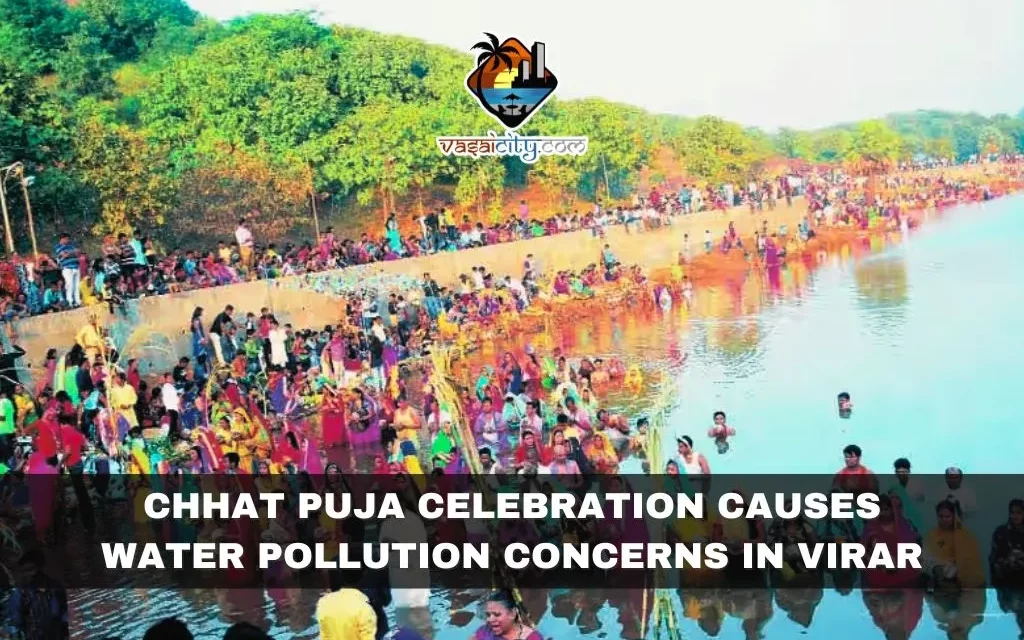Virar, a bustling town located on the outskirts of Mumbai, recently hosted its annual riverbank celebration, known as “Chhat Puja,” at the Papadkhind Dam. The event, attended by thousands of citizens, aimed to offer prayers to the sun and involve ritualistic half-immersions in the dam’s water. However, this festive tradition has sparked concerns about water pollution, as the dam’s water quality has deteriorated due to these activities.
The Papadkhind Dam, situated in Fulpada in eastern Virar, is a vital water source for the city, supplying approximately 10 million liters of water daily. Despite its crucial role, the dam has been a venue for Chhat Puja celebrations for several years. Even though restrictions were in place, enthusiastic participants found ways to carry out the rituals, leading to a significant impact on the water quality. Sunday’s celebration witnessed thousands of citizens descending into the dam, with floating oil lamps contributing to the pollution.
One of the major issues surrounding the Papadkhind Dam is the lack of security measures. This has resulted in unsanitary conditions, affecting not only the local residents but also tourists visiting the area. Apart from the pollution caused by the rituals, citizens have been observed conducting Chhat Puja on the dam’s banks, further adding to the contamination. In response to these concerns, the local authorities, led by District Commissioner Satish Lokhande, issued an order prohibiting the consumption of water from the Papadkhind Dam.
Despite the order, citizens continue to use the dam’s water for various purposes. The immediate implementation of the order was challenging, given the ongoing Chhat Puja celebrations. To address the broader issue of water pollution, the municipality has undertaken the construction of artificial ponds to prevent pollution during religious festivals. However, citizens have expressed discontent, pointing out the lack of initiatives during Chhat Puja specifically.
The annual Ganesh Chaturthi festival, known for its grand celebrations and immersion of idols in water bodies, has prompted the municipality to construct artificial ponds to mitigate pollution. While such measures have been effective during Ganesh Chaturthi, there has been a noticeable lack of similar efforts during Chhat Puja. This discrepancy has fueled public dissatisfaction, with residents questioning the municipality’s commitment to environmental conservation.
Local authorities are now faced with the challenge of balancing cultural and religious traditions with environmental concerns. The need for a comprehensive and inclusive approach to manage water pollution during festivals is evident. Citizens are calling for increased awareness campaigns and stricter enforcement of regulations to ensure the sustainable use of water resources.
As the festive season continues, the Papadkhind Dam remains a focal point for both celebrations and environmental concerns. The delicate balance between tradition and conservation requires collaborative efforts from citizens, authorities, and religious communities to protect the natural resources that play a vital role in the community’s well-being. The conversation around Chhat Puja and its impact on water quality serves as a reminder that cultural practices should evolve to align with environmental sustainability for the benefit of present and future generations.








